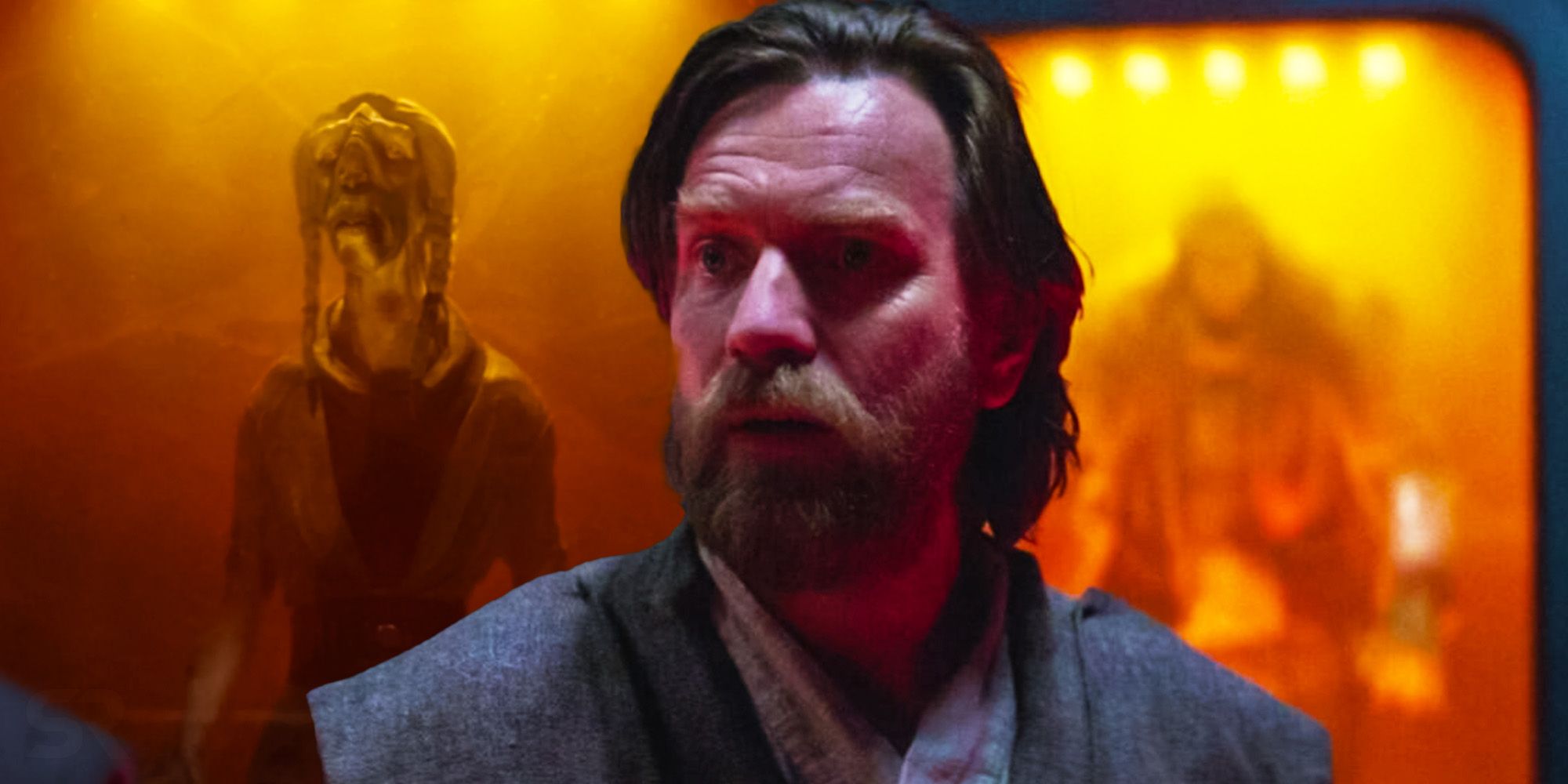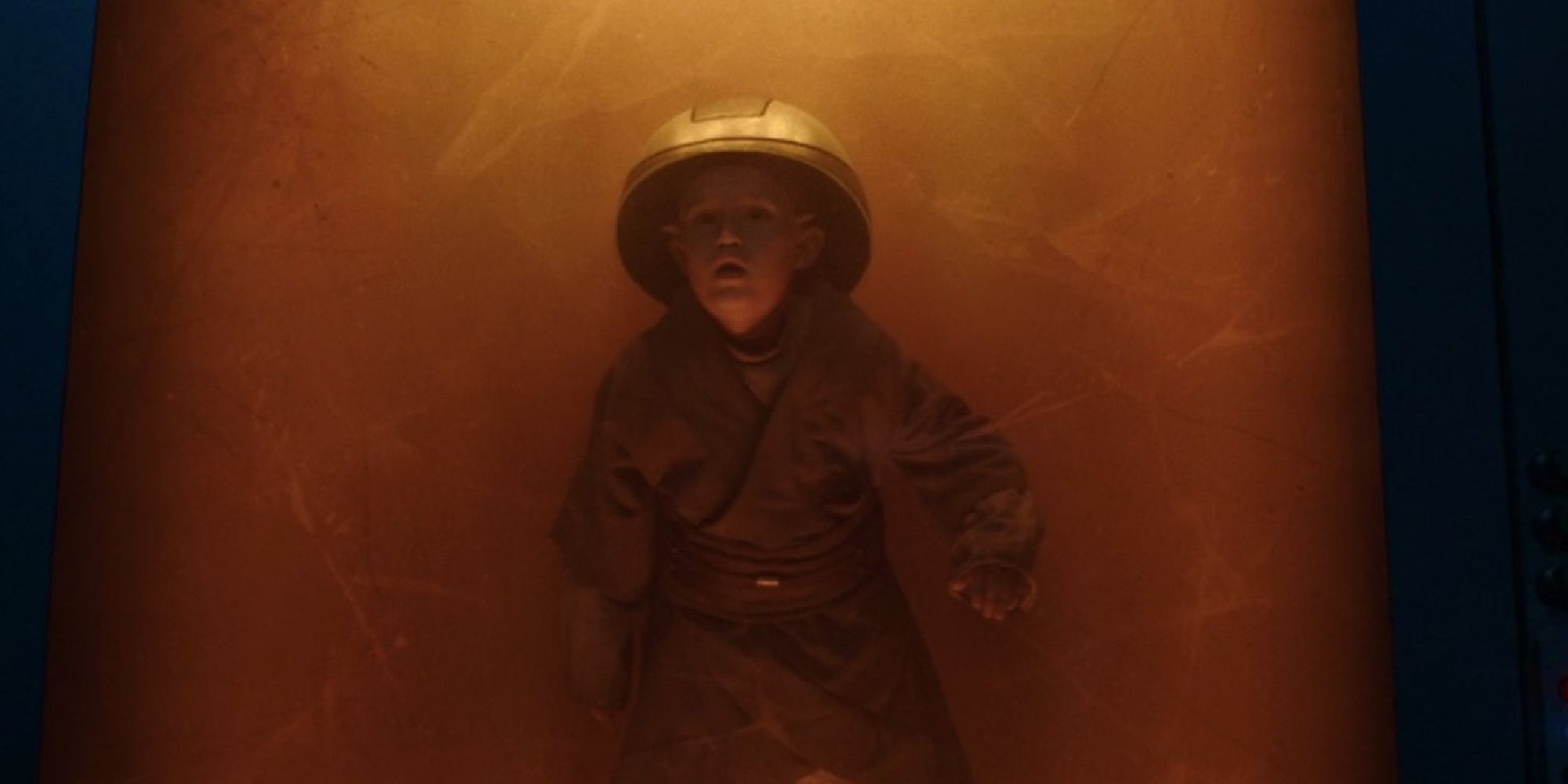Why does the Empire have a tomb of dead Jedi bodies in Obi-Wan Kenobi? In a chilling scene in Obi-Wan Kenobi episode 4, Obi-Wan "Ben" Kenobi stumbles upon a sub-level of Fortress Inquisitorius, which holds rows of preserved Jedi corpses in tombs. It's unclear what purpose these bodies serve for the Empire, but it's certainly something sinister. The answer may lie in other Star Wars series and films.
On his way to rescue Leia (Vivien Lyra Blair) for the second time from the Third Sister, a.k.a. Reva (Moses Ingram), Obi-Wan (Ewan McGregor) and Tala (Indira Varma) infiltrate the Fortress Inquisitorius and Obi-Wan discovers the Empire's secret collection of dead Jedis. The bodies range from familiar–long-time Star Wars viewers may recognize Star Wars: The Clone Wars' Tera Sinube–to obscure, including a youngling slain during Order 66. It is unclear how many Jedi are in that room, but it remains a somber memory of Obi-Wan's past and fellow Jedi.
While the reason behind the Jedi tomb wasn't revealed in Obi-Wan Kenobi, Star Wars: The Rise of Skywalker and The Mandalorian hint at the Empire's insidious motives. The Empire may very well be holding on to the younglings killed in the Clone Wars by Order 66 and other Jedis as trophies of some kind, since the Inquisitors' main role is to eradicate surviving Jedi. That may explain why the bodies look so well taken care of, but it doesn't clarify the expressions of shock on their faces. A more likely reason stems from Emperor Palpatine's quest for immortality and his subsequent experiments. As seen in Star Wars: The Rise of Skywalker, Palpatine had a laboratory in the Sith Citadel on planet Exegol which housed multiple Snoke clones. Additionally, Palpatine himself was in a clone body, his spirit transferred there after the events of Return of the Jedi.
The Mandalorian delves into Palpatine's clone research further, emphasizing the Empire's interest in Baby Yoda/Grogu and his midichlorian-rich blood. As explained by Imperial scientist Dr. Pershing, the Empire wanted Grogu's blood to potentially create more Force-sensitive users. Din Djarin discovers these botched experiments in an Imperial lab on Nevarro. Even after Palpatine's "death," he was still intent on becoming immortal. While Obi-Wan Kenobi is set nine years before Star Wars: A New Hope, The Mandalorian is set five years after Return of the Jedi, and so it appears throughout that (and beyond) the experimentation was never discontinued. It's entirely possible, even probable, that the Jedi corpses that Obi-Wan discovers were used as Imperial test subjects, their blood also being evaluated for midichlorian count. Now their bodies are being preserved in the chance that they could be useful in future experiments.
While Obi-Wan Kenobi may never expound on why the Empire keeps a Jedi tomb in the Fortress Inquisitorius, it does serve as a brutal reminder of the Empire's injustices. Showcasing the Jedi they killed is just another way to keep the galaxy from a full-blown rebellion. At the same time, the Jedi tomb could very well be connected to Palpatine's enduring search for eternal life.
New episodes of Obi-Wan Kenobi release Wednesdays on Disney+.
Want more Obi-Wan Kenobi articles? Check out our essential content below...
- Obi-Wan Kenobi Cast Guide: Every New & Returning Star Wars Character
- Obi-Wan Kenobi Episode 4 Easter Eggs & Star Wars References Explained
- Obi-Wan Kenobi Episode 3 Ending & Final Fight Explained
- Obi-Wan Kenobi Episode 2's Veteran Cameo Explained
- Who Voices Darth Vader In Obi-Wan Kenobi
- Why Obi-Wan Kenobi Is So Weak In His Star Wars Show
- Why Obi-Wan Can’t Talk To Qui-Gon Jinn's Force Ghost
- Did THAT Obi-Wan Kenobi Character Really Just Die?
- Every Jedi Alive During Obi-Wan Kenobi's Timeline
- How Many Episodes Are In Obi-Wan Kenobi (& When Is The Finale)?


